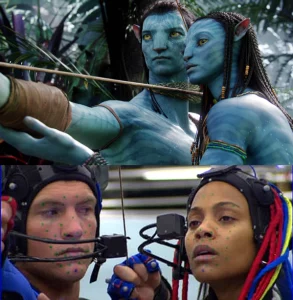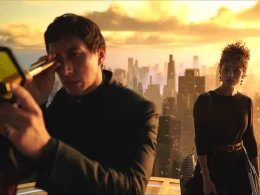Introduction
The realm of movie special effects has undergone a phenomenal transformation over the past few decades, thanks to the rapid advancements in technology. From the early days of practical effects and stop-motion animation to the sophisticated digital landscapes and characters we see today, the evolution of special effects technology in cinema has been nothing short of revolutionary. This article delves into the various ways in which technology is reshaping movie special effects, enhancing storytelling, and creating immersive experiences for audiences worldwide.
The Evolution of Movie Special Effects

-
Early Beginnings: Practical Effects and Stop-Motion
In the early days of cinema, special effects were largely practical and mechanical. Filmmakers used miniatures, models, and stop-motion animation to create fantastical scenes. Pioneers like Georges Méliès, known for his 1902 film “A Trip to the Moon,” utilized innovative techniques such as double exposure and hand-painted frames to bring his visions to life.
Stop-motion animation, popularized by films like “King Kong” (1933) and “Jason and the Argonauts” (1963), involved manipulating physical models frame by frame to create the illusion of movement. These early techniques, while groundbreaking at the time, were labor intensive and limited in scope.
-
The Advent of Computer-Generated Imagery (CGI)
The introduction of computer-generated imagery (CGI) in the late 20th century marked a significant turning point in the world of movie special effects. CGI allowed filmmakers to create detailed and realistic visual effects that were previously impossible to achieve with practical methods alone.
One of the earliest and most notable uses of CGI was in the 1982 film “Tron,” which featured computer-generated environments and characters. However, it was the release of “Jurassic Park” in 1993 that truly showcased the potential of CGI. The film’s lifelike dinosaurs, created using a combination of CGI and animatronics, set a new standard for visual effects in cinema.
Key Technological Innovations in Movie Special Effects

-
Motion Capture Technology
Motion capture, or mo-cap, technology has revolutionized the way filmmakers create realistic characters and creatures. By capturing the movements of real actors and translating them into digital models, mo-cap allows for incredibly lifelike animations. This technology has been instrumental in bringing characters like Gollum from “The Lord of the Rings” and Caesar from “Planet of the Apes” to life.
-
Virtual and Augmented Reality
Virtual reality (VR) and augmented reality (AR) are increasingly being used in the film industry to create immersive experiences. VR allows filmmakers to build entire virtual worlds that viewers can explore, while AR overlays digital elements onto the real world. These technologies are not only enhancing the way special effects are created but also offering new ways for audiences to engage with films.
-
Real-Time Rendering
Real-time rendering technology, often used in video game development, is making its way into the film industry. This technology allows for the creation of high-quality visual effects in real-time, significantly reducing production times and costs. Films like “The Mandalorian” have utilized real-time rendering to create detailed virtual environments, blending them seamlessly with live-action footage.
-
Artificial Intelligence and Machine Learning
Artificial intelligence (AI) and machine learning are playing an increasingly important role in the creation of movie special effects. These technologies can automate complex tasks, such as simulating natural phenomena (e.g., water, fire, and smoke) and enhancing visual effects with minimal human intervention. AI-driven tools are also being used to de-age actors, replace backgrounds, and even create entirely digital characters.
The Impact of Technology on Storytelling

The advancements in special effects technology have had a profound impact on storytelling in cinema. Filmmakers are no longer constrained by the limitations of practical effects and can bring their most ambitious visions to life. This has led to the creation of more visually stunning and imaginative films, pushing the boundaries of what is possible on screen.
-
Expanding Creative Possibilities
With the advent of advanced special effects technology, filmmakers have the creative freedom to explore new genres and storytelling techniques. Science fiction and fantasy films, in particular, have benefited from these advancements, allowing for the creation of intricate and otherworldly environments. Films like “Avatar” and “Inception” have demonstrated how technology can be used to build entirely new worlds and challenge audience perceptions.
-
Enhancing Emotional Impact
Special effects technology also plays a crucial role in enhancing the emotional impact of a film. Realistic visual effects can make action sequences more thrilling, dramatic moments more poignant, and fantastical elements more believable. By seamlessly integrating special effects with live-action footage, filmmakers can create a more immersive and emotionally resonant experience for viewers.
The Future of Movie Special Effects Technology

As technology continues to evolve, the future of movie special effects looks incredibly promising. Emerging technologies such as neural networks, quantum computing, and advanced robotics are poised to further revolutionize the industry.
-
Neural Networks and Deep Learning
Neural networks and deep learning algorithms have the potential to revolutionize the way visual effects are created. These technologies can analyze vast amounts of data and generate realistic animations, textures, and lighting effects with minimal human input. This could lead to more efficient and cost-effective production processes, allowing filmmakers to focus on creative aspects rather than technical challenges.
-
Quantum Computing
Quantum computing, still in its nascent stages, holds the promise of exponentially increasing computational power. This could enable the creation of even more complex and detailed visual effects, pushing the boundaries of what is possible in cinema. While practical applications of quantum computing in film are still a few years away, the potential impact on special effects technology is immense.
-
Advanced Robotics and Animatronics
While CGI has largely replaced practical effects, advanced robotics and animatronics continue to play a vital role in certain aspects of filmmaking. The development of more sophisticated and lifelike robots could lead to a resurgence of practical effects, offering a blend of physical and digital techniques. This hybrid approach could result in even more realistic and compelling special effects.
Conclusion
The transformation of movie special effects technology has had a profound impact on the film industry, enabling filmmakers to bring their most ambitious visions to life. From the early days of practical effects and stop-motion animation to the cutting-edge advancements in CGI, motion capture, and AI, the evolution of special effects technology continues to push the boundaries of what is possible in cinema.
As technology continues to advance, the future of movie special effects looks incredibly promising, with emerging technologies poised to further revolutionize the industry. Ultimately, these advancements will continue to enhance storytelling, create more immersive experiences, and captivate audiences worldwide.
In conclusion, the marriage of technology and creativity in the realm of movie special effects has opened up new possibilities for filmmakers and audiences alike, ushering in a new era of cinematic innovation and wonder.












